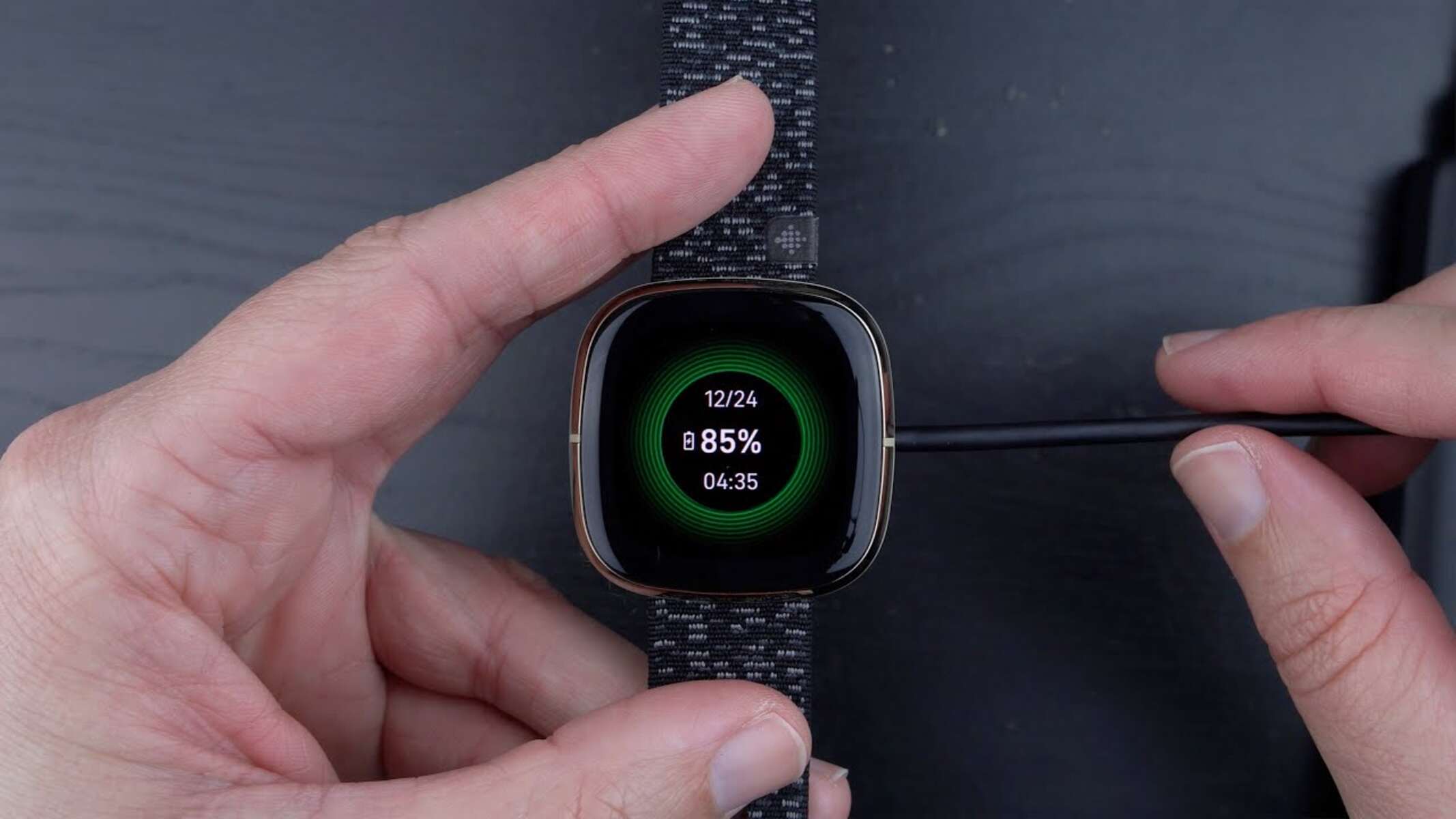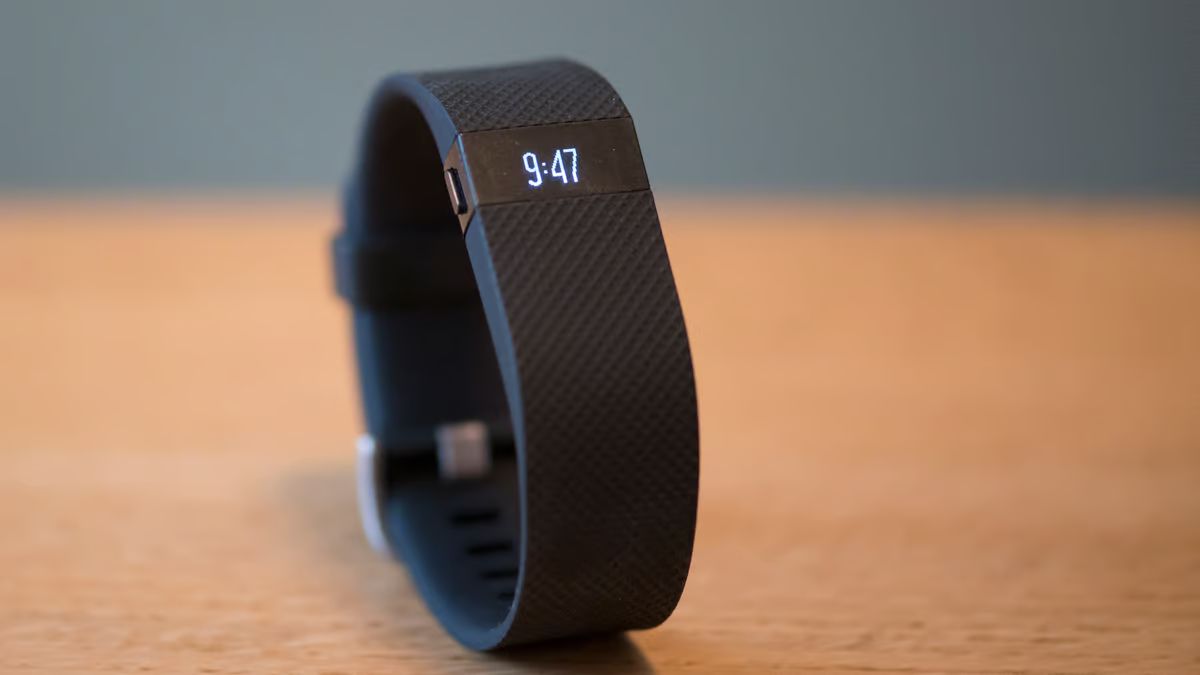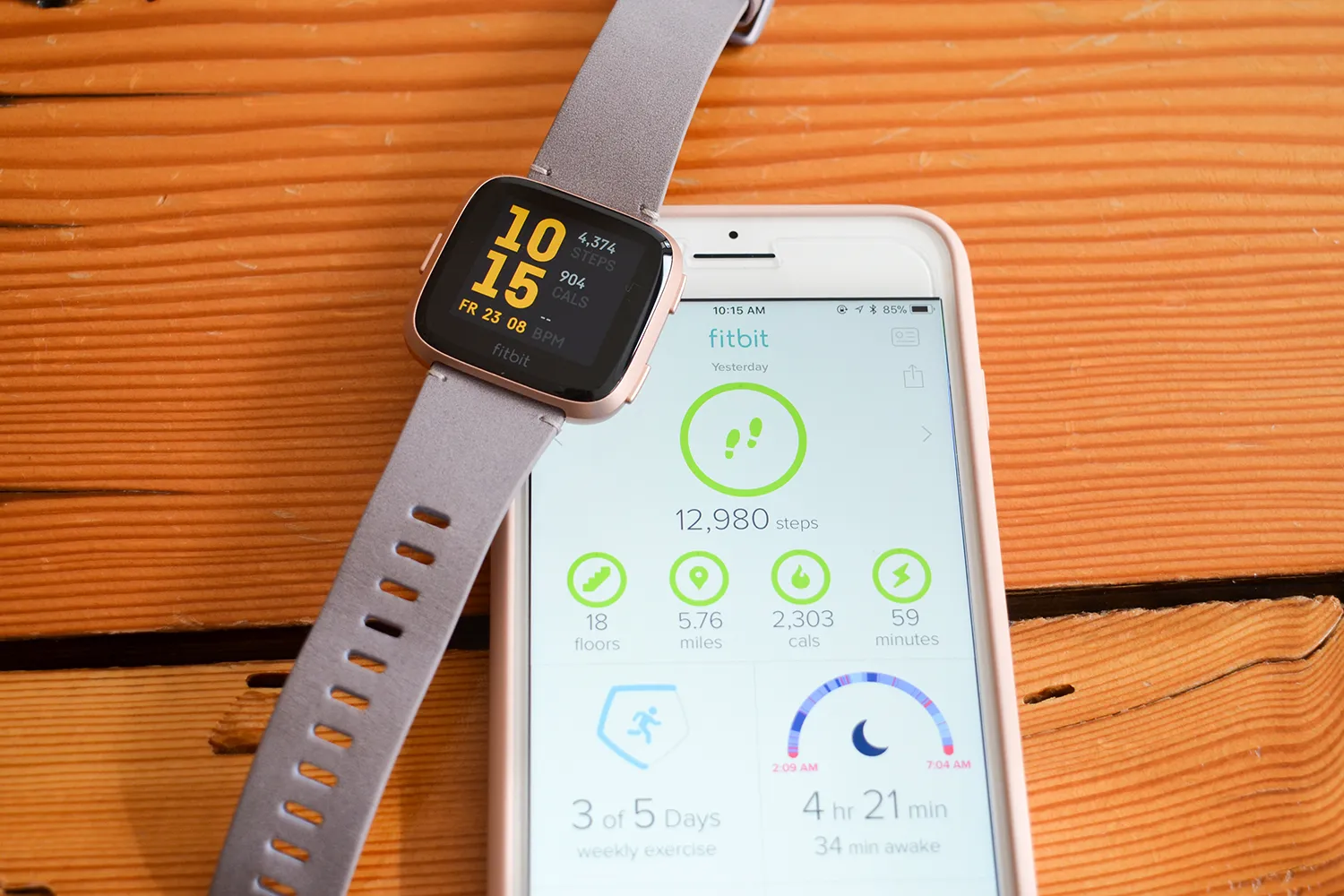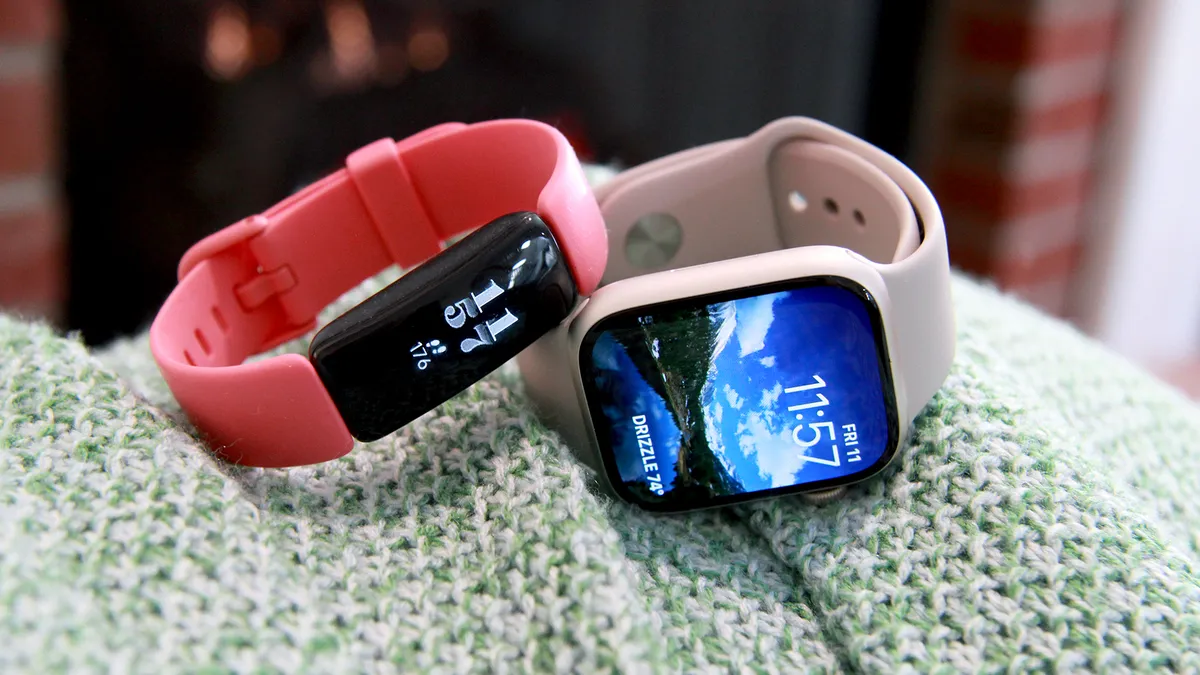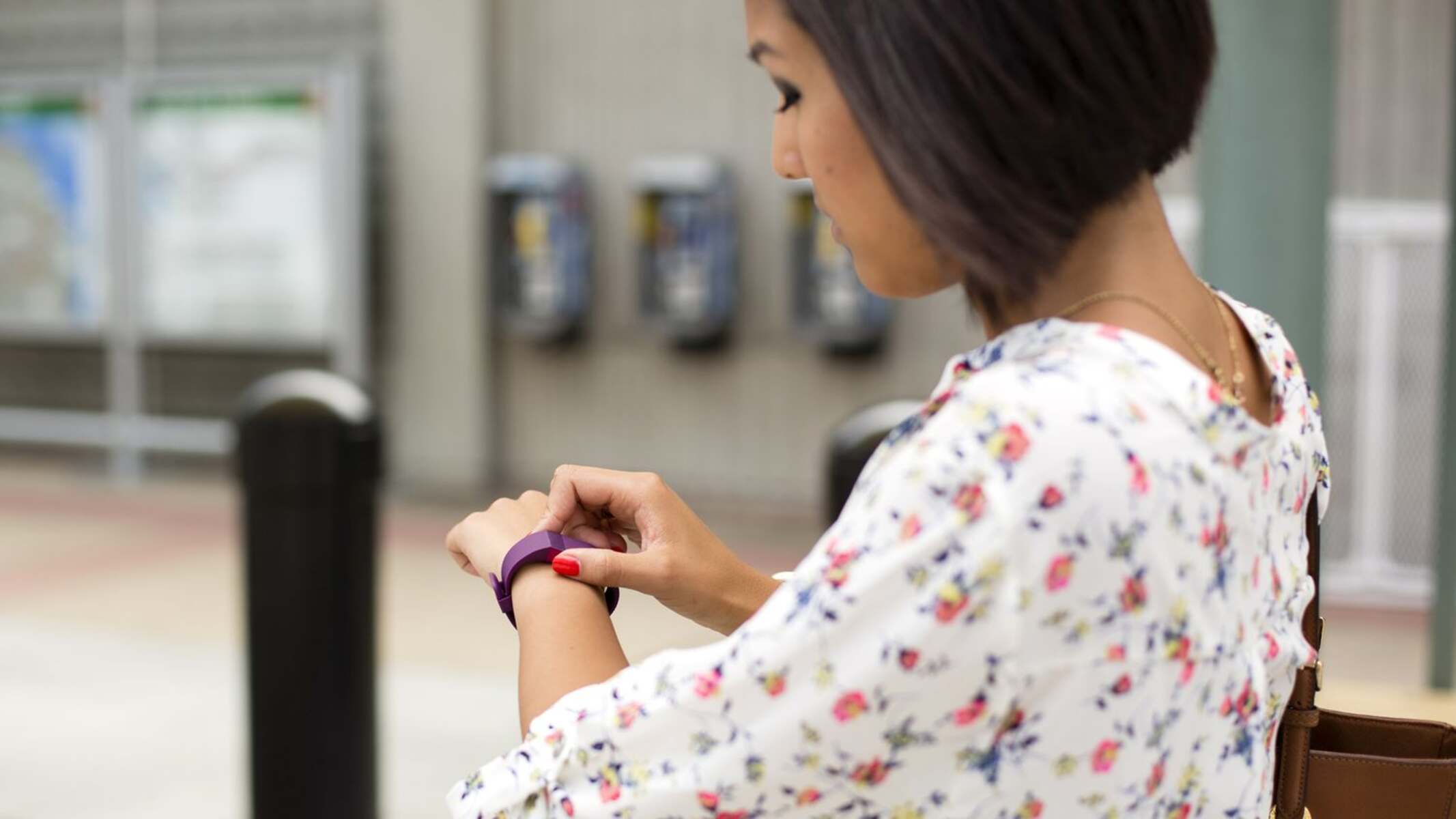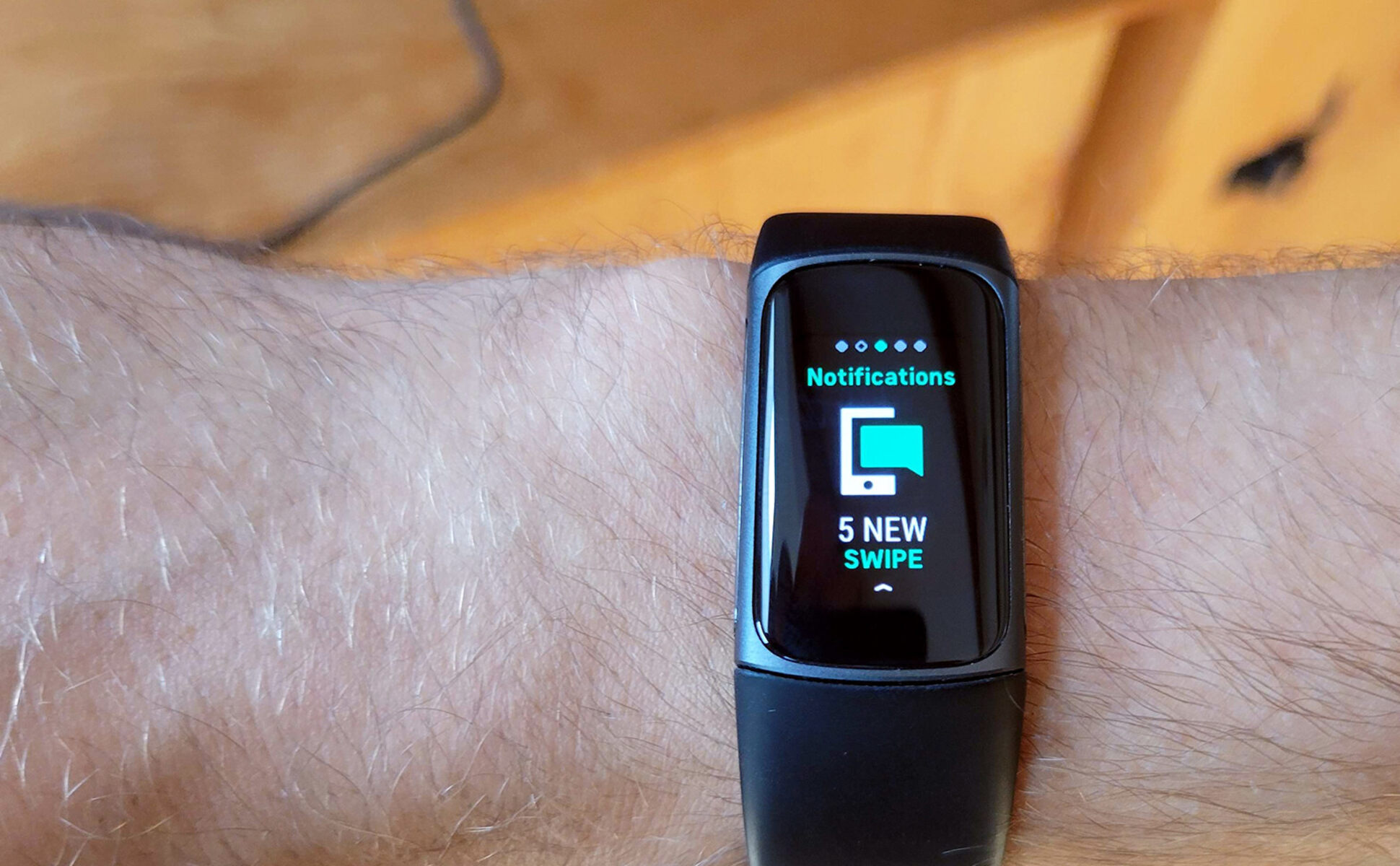Introduction
Ensuring that your Fitbit Sense is charging properly is essential to keep it powered up and ready to track your activities and health metrics. A fully charged Fitbit Sense provides you with the peace of mind that it will accompany you throughout the day, keeping you informed about your fitness goals and overall well-being. However, there are times when you may encounter issues with the charging process, leading to concerns about the device's power status.
In this comprehensive guide, we will walk you through the essential steps to verify if your Fitbit Sense is charging effectively. By following these steps, you can troubleshoot potential charging issues and ensure that your Fitbit Sense remains powered up and ready to support your active lifestyle.
Whether you're a seasoned Fitbit user or a newcomer to the world of wearable fitness technology, understanding the intricacies of charging your Fitbit Sense is crucial. This guide will equip you with the knowledge and confidence to address any charging-related concerns, allowing you to make the most of your Fitbit Sense experience.
Let's delve into the fundamental steps that will help you verify if your Fitbit Sense is charging optimally. By familiarizing yourself with these steps, you can troubleshoot common charging issues and enjoy uninterrupted usage of your Fitbit Sense, empowering you to stay on top of your fitness and well-being goals.
Step 1: Check the Charging Cable
The charging cable plays a pivotal role in ensuring that your Fitbit Sense receives the necessary power to keep it operational. When encountering charging issues, the first step is to meticulously inspect the charging cable for any signs of damage or wear. Begin by examining the physical condition of the cable, paying close attention to the connector and the cable itself.
Look for any fraying, kinks, or bends in the cable that could indicate potential damage. It's crucial to handle the cable gently and avoid bending it at sharp angles, as this can weaken the internal wiring and lead to charging irregularities. Additionally, inspect the connector for any debris or obstructions that could hinder a secure connection to the Fitbit Sense.
Next, ensure that the charging pins on the cable are clean and free from any dirt or residue. Use a soft, dry cloth to gently wipe the pins, removing any dust or buildup that may impede the transfer of power to your Fitbit Sense. It's important to handle the pins with care to avoid bending or damaging them during the cleaning process.
After examining the physical condition of the charging cable, it's essential to verify that the cable is securely plugged into a power source. Whether you're using a wall adapter or a USB port on a computer or charger, confirm that the connection is stable and that the power source is functioning correctly. If you're using a wall adapter, consider trying a different outlet to rule out potential issues with the power source.
In some cases, using an alternative charging cable can help determine if the original cable is the source of the problem. If you have access to another compatible Fitbit charging cable, attempt to charge your Fitbit Sense using the alternative cable to assess whether the issue lies with the original cable.
By meticulously inspecting the charging cable and ensuring that it is free from damage, clean, and securely connected to a reliable power source, you can effectively address potential charging issues and verify that your Fitbit Sense is receiving the power it needs to remain fully charged and operational.
Step 2: Check the Fitbit Sense Connection
A crucial aspect of ensuring that your Fitbit Sense is charging effectively involves examining the connection between the device and the charging cable. A secure and stable connection is vital for the seamless transfer of power, allowing your Fitbit Sense to recharge efficiently. Here's a detailed exploration of the steps involved in checking the Fitbit Sense connection to troubleshoot potential charging issues.
Secure Attachment
Begin by carefully inspecting the attachment of the charging cable to your Fitbit Sense. Ensure that the connector aligns properly with the charging port on the device, and gently press it into place to establish a secure connection. It's essential to avoid applying excessive force, as this could potentially damage the charging port. A gentle yet firm attachment is key to establishing a reliable connection for charging.
Cleanliness of Charging Port
Next, examine the charging port on your Fitbit Sense for any debris, dust, or residue that may hinder the connection. Use a soft, dry cloth or a gentle puff of compressed air to remove any foreign particles that could impede the charging process. A clean charging port promotes optimal contact between the device and the charging cable, facilitating efficient power transfer.
Positioning and Orientation
Pay attention to the positioning and orientation of the Fitbit Sense while it's connected to the charging cable. Ensure that the device rests securely on the charging cable, with the connector fully inserted into the charging port. Avoid placing the Fitbit Sense in a position that strains the cable or causes it to bend at sharp angles, as this can compromise the connection and lead to charging irregularities.
Rebooting the Device
If you encounter persistent charging issues despite verifying the connection, consider rebooting your Fitbit Sense. A simple restart can resolve temporary software glitches that may be affecting the charging process. To reboot your device, follow the manufacturer's guidelines for initiating a restart, allowing the Fitbit Sense to power down and then turning it back on to reestablish normal operation.
By meticulously examining the Fitbit Sense connection, ensuring a secure attachment, maintaining a clean charging port, and paying attention to the positioning and orientation of the device, you can effectively troubleshoot potential charging issues. Additionally, a device reboot can help address software-related factors that may impact the charging process, ensuring that your Fitbit Sense receives the power it needs to remain fully charged and ready to support your active lifestyle.
Step 3: Check the Power Source
Ensuring that the power source for charging your Fitbit Sense is reliable and functional is essential for maintaining the device's optimal performance. A thorough assessment of the power source can help identify and address potential issues that may hinder the charging process. Here's a detailed exploration of the critical aspects involved in checking the power source to verify that your Fitbit Sense is receiving the necessary power for charging.
Stability and Voltage Output
Begin by assessing the stability and voltage output of the power source used for charging your Fitbit Sense. Whether you're utilizing a wall adapter or a USB port on a computer or charger, it's crucial to confirm that the power source delivers a consistent and adequate voltage output. Fluctuations or irregularities in voltage can impact the charging process, potentially leading to inefficiencies or interruptions in charging. If possible, consider using a voltage meter to measure the output of the power source and ensure that it aligns with the manufacturer's specifications for charging the Fitbit Sense.
Alternative Power Sources
In cases where the primary power source exhibits inconsistencies or fails to charge the device effectively, exploring alternative power sources can provide valuable insights. Attempt to charge your Fitbit Sense using different wall adapters, USB ports, or charging devices to determine if the issue lies with the specific power source. By testing multiple power sources, you can identify whether the charging irregularities are attributed to the original power outlet or adapter, allowing you to make informed decisions regarding the selection of a reliable power source for charging your Fitbit Sense.
Environmental Factors
Consider the environmental conditions surrounding the power source, as they can impact the charging process. Factors such as extreme temperatures, humidity, and electrical interference can influence the stability and effectiveness of the power source. Ensure that the charging area is free from excessive heat or moisture, as these conditions can adversely affect the performance of the power source and subsequently impact the charging of your Fitbit Sense. Additionally, minimize potential sources of electrical interference in the vicinity of the power source to maintain a conducive environment for optimal charging.
Power Source Compatibility
Verify that the power source used for charging your Fitbit Sense is compatible with the device's charging requirements. Different Fitbit models may have specific voltage and amperage requirements for charging, and using an incompatible power source can lead to charging issues. Refer to the manufacturer's guidelines and specifications to ensure that the power source aligns with the recommended parameters for charging the Fitbit Sense. Compatibility between the power source and the device is crucial for facilitating a seamless and efficient charging process.
By meticulously examining the stability and voltage output of the power source, exploring alternative charging options, considering environmental factors, and ensuring compatibility between the power source and the Fitbit Sense, you can effectively address potential charging issues and verify that your device receives the power it needs to remain fully charged and operational.
Step 4: Check the Charging Indicator
The charging indicator on your Fitbit Sense serves as a valuable visual cue that provides insights into the device's charging status. By closely monitoring the charging indicator, you can gain valuable information about the progress and effectiveness of the charging process. Here's a detailed exploration of the essential aspects involved in checking the charging indicator to verify that your Fitbit Sense is receiving the necessary power for charging.
Understanding the Charging Indicator
The charging indicator on the Fitbit Sense typically manifests as a small LED light located near the device's charging port. This indicator illuminates in various colors or patterns to convey specific messages related to the charging status. Familiarizing yourself with the meanings associated with different indicator states is crucial for interpreting the device's charging progress accurately.
Charging States and Interpretation
When your Fitbit Sense is connected to the charging cable, the indicator may exhibit distinct behaviors to communicate its charging status. A steady, solid light often signifies that the device is actively charging, indicating a stable connection and the receipt of power from the charging source. On the other hand, a blinking or pulsating light may indicate that the device is not charging optimally, signaling potential issues with the connection, power source, or device itself.
Troubleshooting Indicator Behaviors
If the charging indicator on your Fitbit Sense displays unexpected or irregular behaviors, it's essential to address the underlying factors that may be impacting the charging process. Begin by ensuring that the charging cable is securely connected to the device and the power source, and that the charging port is free from any obstructions or debris. Additionally, verify that the power source delivers a stable voltage output within the manufacturer's specified range for charging the Fitbit Sense.
Interpreting Charging Completion
As the charging process nears completion, the indicator may exhibit distinct behaviors to signal that the device is fully charged. This could include a solid or pulsating light of a specific color, indicating that the Fitbit Sense has reached its maximum charge capacity. Understanding the charging completion indicators allows you to promptly disconnect the device from the charging cable, ensuring that it remains optimally charged and ready for use.
Monitoring Charging Progress
Regularly monitoring the charging indicator while your Fitbit Sense is connected to the charging cable provides valuable insights into the device's power status. By paying close attention to the indicator's behaviors and interpreting its messages accurately, you can ensure that your Fitbit Sense receives the power it needs to remain fully charged and operational, empowering you to make the most of its features and functionalities.
By diligently checking the charging indicator and interpreting its behaviors, you can effectively verify that your Fitbit Sense is charging optimally, addressing potential issues and ensuring that the device remains powered up and ready to support your active lifestyle.
Conclusion
In conclusion, the process of verifying if your Fitbit Sense is charging effectively encompasses a series of essential steps that empower you to troubleshoot potential charging issues and ensure that your device remains powered up and ready to accompany you through your daily activities. By meticulously examining the charging cable, checking the Fitbit Sense connection, assessing the power source, and monitoring the charging indicator, you can navigate through common charging challenges and maintain the optimal charging performance of your Fitbit Sense.
The thorough inspection of the charging cable serves as the initial checkpoint in the verification process. By meticulously assessing the physical condition of the cable, ensuring a secure connection to the power source, and examining the cleanliness of the charging pins, you can address potential cable-related issues and lay the groundwork for a successful charging experience.
Furthermore, the examination of the Fitbit Sense connection plays a pivotal role in establishing a secure and reliable link between the device and the charging cable. By ensuring a secure attachment, maintaining a clean charging port, and paying attention to the positioning and orientation of the device, you can facilitate seamless power transfer and address potential connection-related challenges.
Assessing the stability and compatibility of the power source provides valuable insights into the environmental and technical factors that may impact the charging process. By exploring alternative power sources, verifying compatibility, and considering environmental influences, you can identify and address potential power source-related issues, ensuring that your Fitbit Sense receives the necessary power for charging.
Lastly, the monitoring and interpretation of the charging indicator offer valuable visual cues that convey the device's charging status. By understanding the charging indicator's behaviors, troubleshooting irregularities, and interpreting completion signals, you can gain critical insights into the charging progress and ensure that your Fitbit Sense remains optimally charged and ready for use.
In essence, the comprehensive guide to verifying if your Fitbit Sense is charging effectively equips you with the knowledge and strategies to overcome common charging challenges. By following these steps, you can maintain a seamless charging experience, empowering you to stay connected to your fitness goals and well-being metrics without interruptions caused by charging issues.







